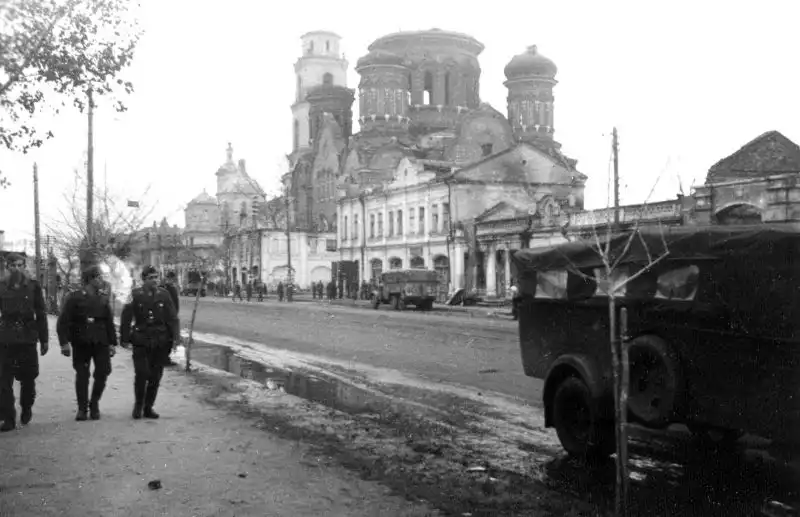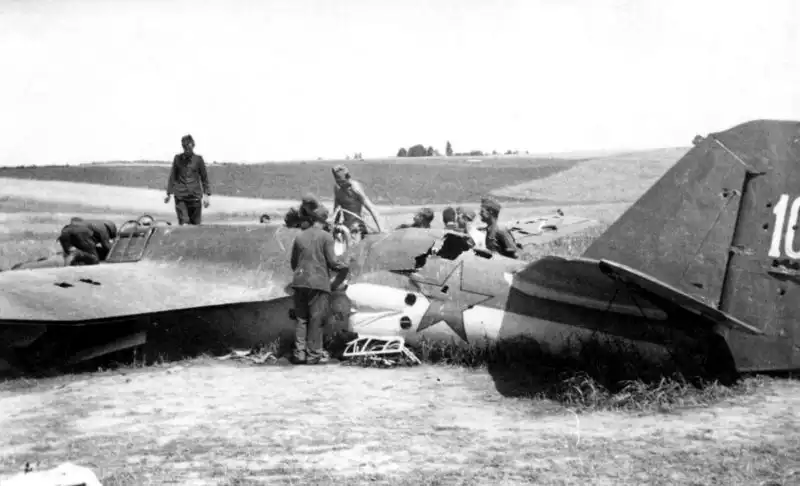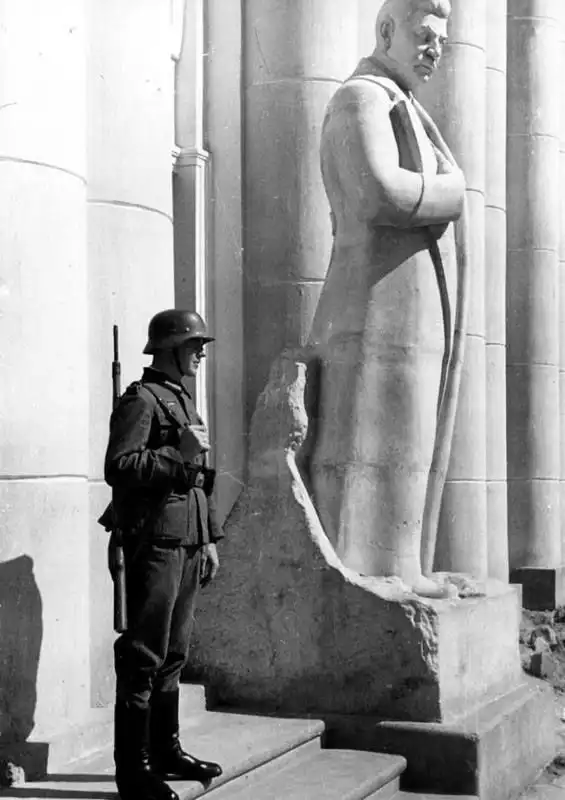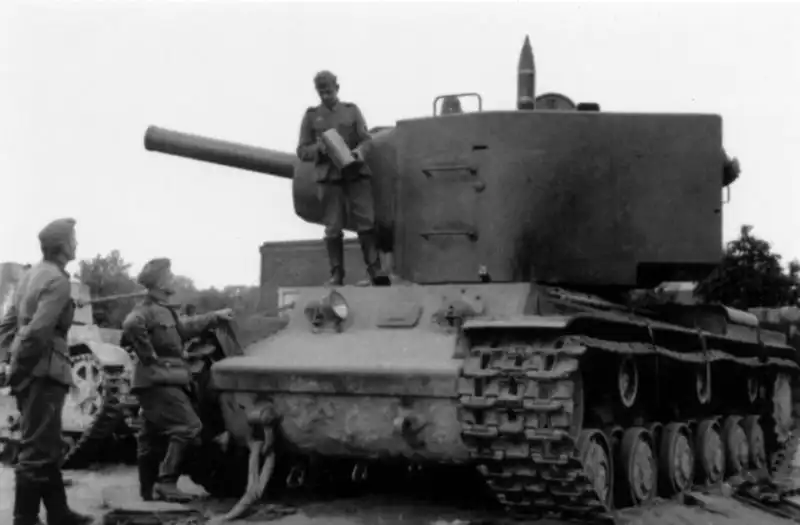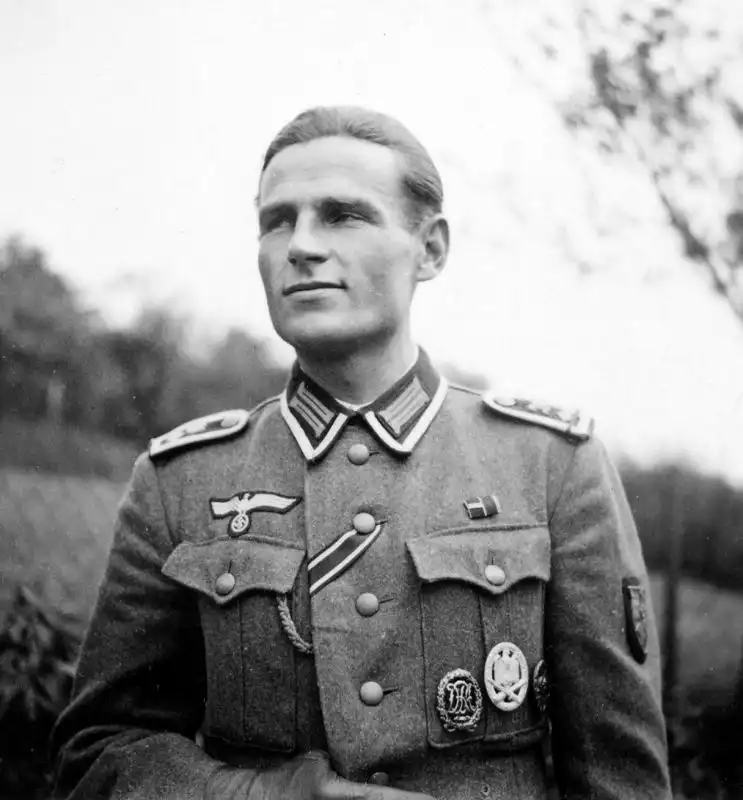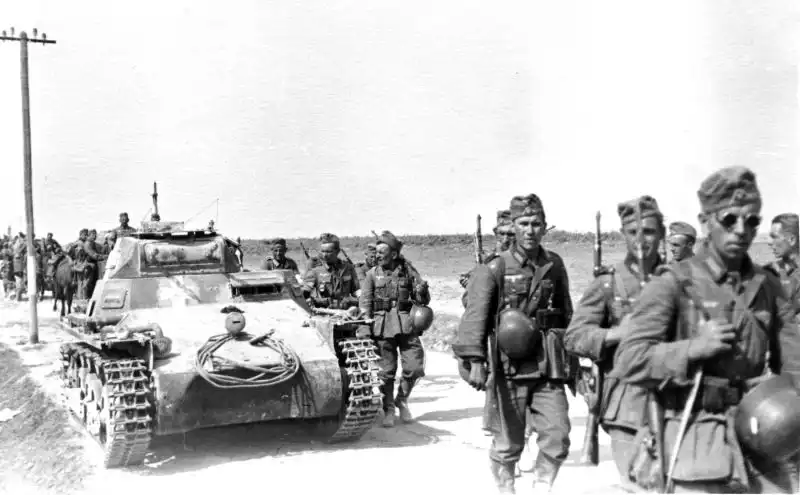Soviet Troops Display Captured German sIG 33 Guns After Kursk Clash, Summer 1943
October 9, 2025 - Reading time: 4 minutes
Soviet troops inspect captured German sIG 33 infantry guns after the Battle of Kursk, summer 1943.
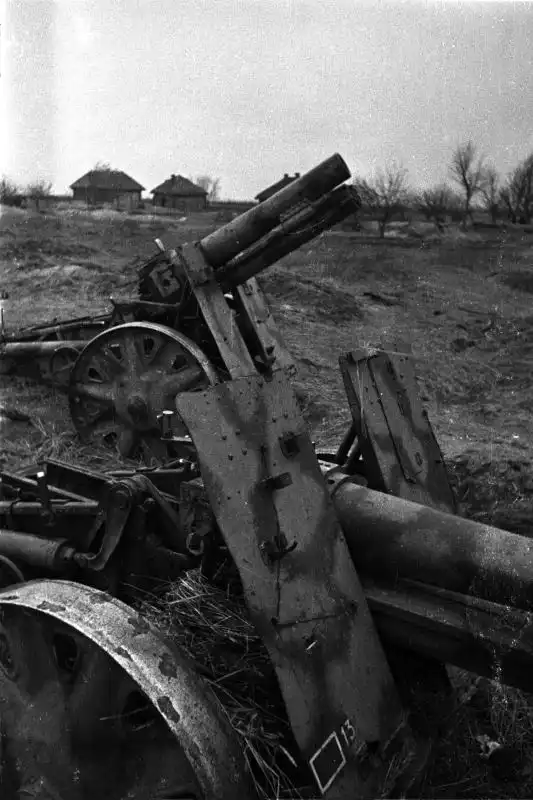
This World War II photograph shows Soviet troops examining captured German sIG 33 (15 cm schweres Infanteriegeschütz 33) heavy infantry guns after the decisive Battle of Kursk in the summer of 1943. Taken by Natalia Bode, the image highlights the tangible spoils of the Red Army’s defensive and counteroffensive operations.
The sIG 33 was developed in 1927 and entered service in 1933, designed to provide heavy fire support for German infantry units. Each gun weighed roughly 1,750 kilograms and could fire a 150 mm shell up to 4,650 meters. By mid-1943, these weapons were increasingly outdated—difficult to maneuver and vulnerable to Soviet artillery and air attacks.
During the Kursk campaign, numerous sIG 33 guns were either abandoned by retreating Wehrmacht units or captured by advancing Soviet forces. Some of these artillery pieces were later adapted into self-propelled guns, mounted on light and medium tank chassis, such as the Grille and Bison, to improve battlefield mobility.
This photograph not only documents the Red Army’s battlefield success but also demonstrates the tactical limitations of Germany’s infantry support weapons during the later stages of the Eastern Front conflict. The captured sIG 33s serve as enduring symbols of Soviet resilience and the shifting momentum in favor of the Allies.
Technical photo data:
📍 Location: Kursk, USSR
📅 Date: Summer 1943
📝 Event: Inspection of captured German sIG 33 artillery following the Battle of Kursk
📷 Author: Natalia Bode
- Captured German sIG 33 guns Kursk
- Soviet inspection of Wehrmacht artillery
- Red Army trophies Eastern Front 1943
- German 150 mm infantry gun abandoned
- Kursk battlefield captured weapons photos
Tags
Category
Search
Categories
- Unidentified WWII Photos (12)
- World War II Photos 1937 (1)
- World War II Photos 1938 (1)
- World War II Photos 1939 (3)
- World War II Photos 1940 (5)
- World War II Photos 1941 (98)
- World War II Photos 1942 (54)
- World War II Photos 1943 (48)
- World War II Photos 1944 (76)
- World War II Photos 1945 (40)
- WWII and Postwar Photos 1946 (1)
